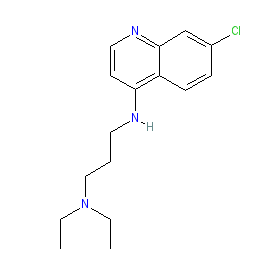GtoPdb is requesting financial support from commercial users. Please see our sustainability page for more information.
|
Synonyms: Ro 47-0543
Compound class:
Synthetic organic
Comment: AQ-13 is a 4-aminoquinoline antimalarial compound related to chloroquine [3,7].
The Malaria tab on this ligand page provides additional curator comments of relevance to the Guide to MALARIA PHARMACOLOGY. |
|
|||||||||||||||||||||||||||||||||||
| Guide to Malaria Pharmacology Comments |
| Despite the widespread emergence of P. falciparum strains that are resistant to chloroquine, the 4-aminoquinoline scaffold has continued to be the basis for the development of new antimalarial drug candidates. SAR studies have been undertaken to inform the development of aminoquinoline derivatives that are active against both chloroquine-susceptible and -resistant P. falciparum, with AQ-13 identified as a compound suitable for progression to clinical evaluation [2-3,5]. Potential Target/Mechanism Of Action: As the precise MOA of AQ-13 is not yet known, we do not have a molecular target for this compound. It is thought that AQ-13 has a similar MOA to chloroquine, killing the malaria parasite by causing a build up of toxic heme by inhibiting the enzyme that normally converts it to non-toxic haemozoin [1]. |








